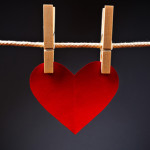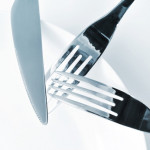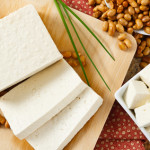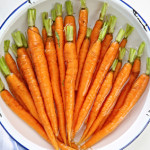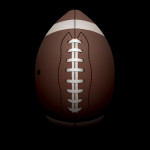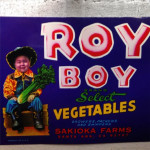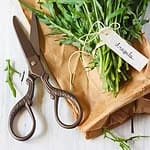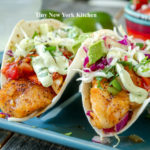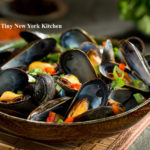Valentine’s Day Fun Facts
In the Middle Ages, young men and women drew names from a bowl to see who their valentine would be. They would wear these names on their sleeves for one week. To “wear your heart on your sleeve” now means that it is easy for other people to know how you are feeling.
The most fantastic gift of love is the Taj Mahal in India. It was built by Mughal Emperor Shahjahan as a memorial to his wife, who died in childbirth. Work on the Taj began in 1634 and continued for almost 22 years and required the labor of 20,000 workers from all over India and Central Asia.
About 1 billion Valentine’s Day cards are exchanged each year. That is the largest seasonal card-sending occasion of the year, next to Christmas.
About 3 percent of pet owners will give Valentine’s Day gifts to their pets.
Hallmark has over 1,330 different cards specifically for Valentine’s Day.
In the United States, 64 percent of men do not make plans in advance for a romantic Valentine’s Day with their sweethearts.
“Work With What You Got!”
© Victoria Hart Glavin Tiny New York Kitchen
Romantic Valentine’s Day Date Ideas For Busy Parents
Ohhhh the pressure of Valentine’s Day. Romance doesn’t die when you become a parent. You just have to be creative by using what you have and, above all, appreciating each other. Romance for parents today is a bit different. Make the most out of what really matters and show your love as loving parents do.
Use Technology
In the day of the smartphone, webcams and computers, there is no reason why you can’t text, video message or email your spouse with messages of love. Don’t just do it on Valentine’s Day. Do it when it’s least expected.
Get A Sitter
Parents appreciate the neighborhood teenagers who can drop by every now and then to give them some uninterrupted conversation.
Rent A Video And Order In
The time spent together enjoying each other in a comfortable, relaxed atmosphere makes it easy to reserve the extravagant nights for extra-special occasions.
Think Beyond Dinner
Dinner is always great, but so is an afternoon or daytime adventure and this year the holiday falls on a Saturday. Are you and your sweetie the outdoor types? Try a hike and bring a picnic (complete with wine, of course). Or, book a couples massage at your favorite local day spa. Your honey might claim that he (or she) is not the massage type, but I don’t know anyone who can resist 50 minutes of bliss.
“Work With What You Got!”
© Victoria Hart Glavin Tiny New York Kitchen
Perplexing Foodstuffs
There are those foods that can be rather difficult to figure out how to eat without looking like you were born in a cave. Here are some useful tips for properly eating perplexing foodstuffs.
Artichokes
Pluck off artichoke leaves and scrape the tender part (not the prickly point) between your teeth (preferably after dipping in melted butter). Work your way to the delicate inner leaves, and then use a knife to cut off the remaining small leaves and feathery innards. Cut the artichoke “heart” into bite-sized pieces and eat with a fork.
Asparagus
Eat asparagus with your fingers if served raw as crudités. Eat with a fork and knife if served with dinner.
Bread
Break bread into bite-sized pieces, and butter it or dip it into olive oil just one piece at a time.
Crab (Soft-Shelled)
Eat entire crab, including shell, either in sandwich form or using a fork and knife. Remove inedible pieces from your mouth with a fork.
Fajitas
Place meats, vegetables, and other fillings on a flat tortilla. Roll up and use your fingers to eat fajitas from one end.
Fondue
Spear bread, vegetables, or fruit with a fondue spear and dip into cheese or sauce. Remove food from spear using a dinner fork, and eat from a plate. DO NOT double dip. Spear uncooked meat cubes and place spear into fondue broth or sauce. When cooked, transfer meat to a plate using a dinner fork and cut into smaller pieces to eat.
Lobster
Wear a lobster bib to avoid fishy splatters, Crack shells with shellfish crackers and extract meat with a small fork or pick. Cut larger pieces with a knife, and eat with a fork after dipping in melted butter. Clean your hands by dipping fingers into finger bowls, and use lemon (if provided) to cut extra grease. Dry your hands with your napkin.
Peas
Use a knife to push peas onto a fork. Do not mash peas before eating, or eat peas from a knife.
Raw Shellfish
Use a small fork to extract mussels, clams, or oysters from the half-shell. Season with fresh lemon or cocktail sauce. In informal settings, you may quietly slurp shellfish from shells.
Soup
Using a soup spoon, spoon soup away from your body and then quietly sip from side of spoon. Tilt bowl away from you to spoon up remaining drops.
Spaghetti
Twirl pasta with fork tines into bite-sized portions, and allow any dangling pieces to fall back onto your fork. You may also rest fork tines against the bowl of a spoon while you twirl pasta.
Steamers
Extract clam from shell using a small fork, and use a fork and knife to remove inedible neck. In informal settings, it is permissible to use fingers.
“Work With What You Got!”
© Victoria Hart Glavin Tiny New York Kitchen
Table Manners Dos and Don’ts
I believe it’s always best to start with the positive so let’s start with the “Dos.”
Table Dos
Do place your napkin in your lap, and use it to blot your lips and wipe your hands.
Do wait for your hostess to be seated before you start eating, unless requested to do so earlier.
Do cut food into manageable, bite-sized pieces, and swallow before you speak.
Do say, “Please pass the…” instead of reaching across the table and igniting yourself on an open flame.
Do place fork and knife diagonally across the upper right hand corner of your plate when you are finished eating.
Do remove hot or inedible substances from your mouth with your fork, not your fingers or napkin.
Do eat drink garnishes after draining your glass, not before.
Do use a fork when sopping up gravy or sauces with chunks of bread.
Do use finger bowls to clean fingers, and hot towels to clean hands and mouths.
Do refrain from making or receiving phone calls at the table.
Table Don’ts
Don’t grasp eating utensils as you would a garden trowel or hammer, or place used utensils directly on the table.
Don’t tuck your napkin into your shirt collar.
Don’t primp or clean your teeth at the table.
Don’t fidget or make loud noises while you eat (slurping, burping, lip-smacking).
Don’t slouch or otherwise lean on the table.
Don’t scoop ice from your water glass to cool hot soups or beverages.
Don’t season your food before you taste it.
Don’t push your plate away from you when you are finished eating.
Don’t leave your spoon in your mug while drinking from it, or wring tea bags with your fingers.
Don’t dunk donuts or scones into beverages.
“Work With What You Got!”
© Victoria Hart Glavin Tiny New York Kitchen
Table Your Manners
Teaching manners to your children is difficult and sometimes following proper table manners yourself is even more difficult. The dinner table has become a free-for-all these days, and did you just see the “Lord of the Napkin Rings” just stuck his chewing gum on his plate? But before you double-dip your roast orc in the fondue, take a look around you. This is NOT Middle-Earth, and that is NOT your water glass! Oy Vay!
The first step to deciphering the individual place setting involves locating your drinking glass. While you should always, “drink right,” as in not gulping or slurping beverages, you should remember that your drink is on the right side of your plate. If you need a status symbol to boost your confidence, think of your BMW while you dine. Bread plate to the left; Meal plate in the center; Water glass to the right.
Use silverware from the outside in, and in the order it is presented (soup spoon on the outer right, small fork on the far left).
You have two choices when it comes to handling your fork and knife, which are American-style and European-style. When cutting meat, for example, both Americans and Europeans hold the fork in the left hand, tines down, and the knife in the right hand, blade down. After slicing meat into bite-sized pieces, however, Americans place the knife on the plate (preferably at a diagonal across the upper right side), and switch the fork to the right hand before eating. Europeans hold their fork, tines down, in the left hand while cutting and eating. Either style is correct.
“Work With What You Got!”
© Victoria Hart Glavin Tiny New York Kitchen
“If we all did the things we are capable of,we would astound ourselves.”
-Thomas Edison
Don’t WISH For It, WORK For It.
You must think like a child with the eyes of a chef, open and naive. Never say something doesn’t work or is impossible to do. – Juan Mari Arzak


